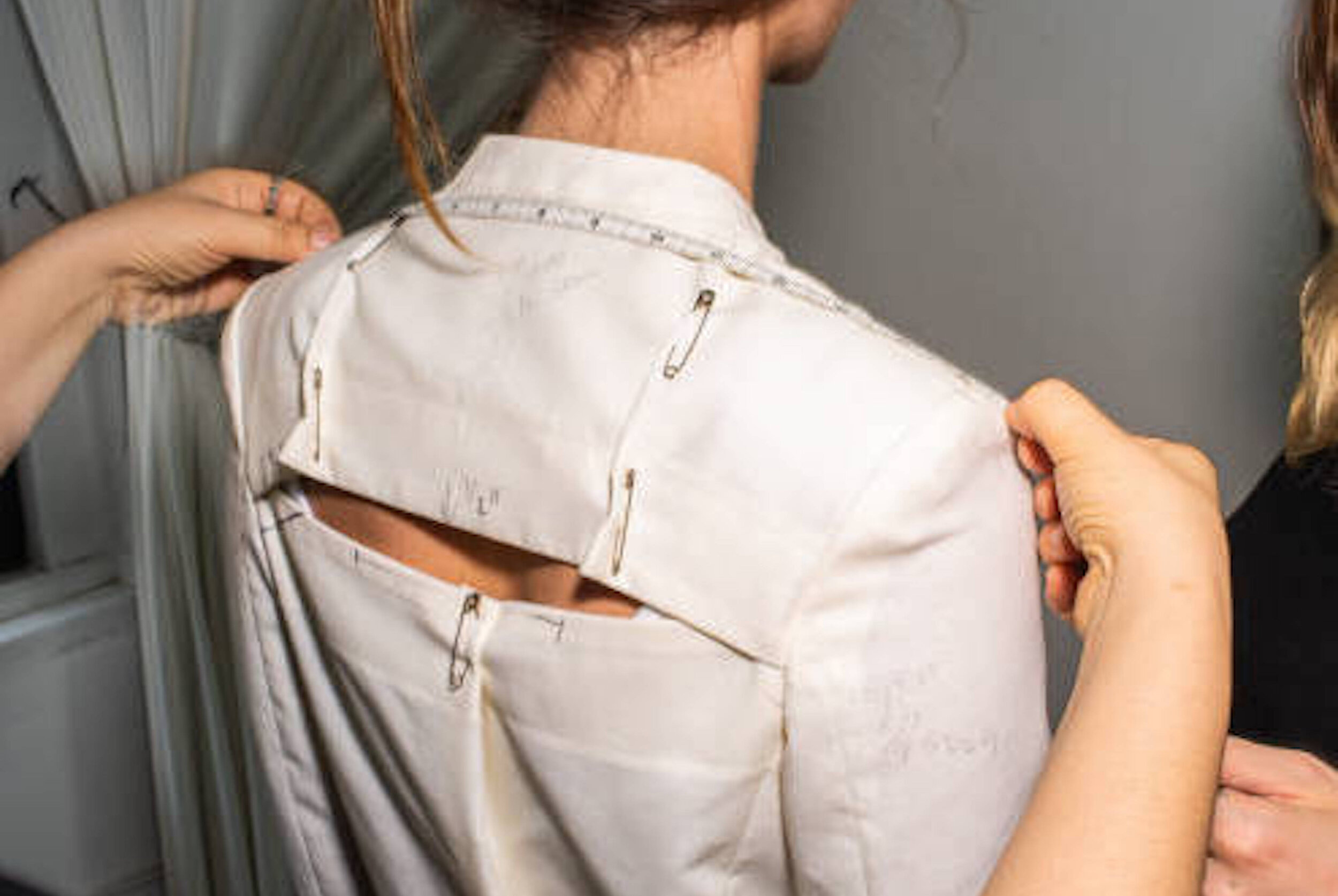Steps to Production Series - Fitting
Fittings are an essential step in your launching process. If you skip fittings and go directly to production you are running the risk of sitting on an entire production that doesn’t fit your customers. In this blog post I will run you through how to perform a proper fitting and what needs to happen during the process.
By now you should have already cast your fit model and have a scheduled time booked that whoever is creating your prototype or sample is aware of. As I mentioned in the last blog post, this deadline is important because if you cancel your fitting at the last minute it can result in delays in production and you may still end up having to pay the model for their time. During your fitting, having your pattern maker and experienced fit consultant attend the fitting can be a huge plus to creating a garment that fits your customer. At V.Mora when we help clients with fittings not only do we have our pattern maker attend but also a staff member to take photos, notes, and measurements of each garment being fitted. Some designers are knowledgeable in fitting garments, but if you are not it is best to have a couple of educated opinions on fit. Sometimes the pattern maker wants to make the easiest and simplest decision for a fit alteration, but it may not be the best for your brand so having a team or working with V.Mora can improve your line.
When preparing for a fitting you want to think about what supplies may be needed. Some items needed at your fitting are straight pins, safety pins, measuring tape, spec sheets, markers and pens. Be sure to have your original spec sheets to confirm the directions were followed and any alteration notes should be marked on the spec sheets. Each garment should be marked with either a straight pin (although these can fall out), a safety pin, or actually drawing on the garment with a marker. My previous blog, prototyping, mentions why our first prototype is best to be made in muslin or a cheaper alternative to your fabric and left with unfinished edges; the reasoning is, during fittings pinning, altering and marking the prototype is common.
During the fitting you want to make sure you take rigorous notes and mark alterations on the garments, and photograph every piece on the model. This way the pattern maker has photos, notes, and markings to follow. The more information given now, the better the next fitting will be! It is best to send a summary to everyone of any alteration notes, photos etc. to ensure everything is in writing and everyone understands what is needed and what the next steps are. You will want to print those photos and attach them to the spec sheets with alteration notes on them. This is so the pattern maker can make the alterations to the patterns, based on your notes and have this information readily available when needed.
Fittings need to be performed with a prototype (sometimes more than once depending on how close the first round went), another fitting will be needed with the final sample, and a fitting for a size check run, which I cover in a later blog. Do not move forward into production until you are happy with the sample. Even if an alteration is small, you’ll want to see a perfect sample on the body before moving to the next steps of production.
Interested in hiring us for patterns and samples? V.mora offers a wide range of Pattern and Sample Making services. From the initial sketch to the first sample: we create patterns and samples, correct the fit, adjust design details and make improvements, then ensure that patterns are production-ready by digitizing and grading them to specific sizes. V.Mora ensures a perfect production-ready sample. Our team can help you with all the steps to get your product through development in as little as three months.
Steps for the Product Development
Sourcing
Technical sketches
Pattern Making
Prototype making
Sample Making
Fittings
Digitizing and Grading
Marker Making
Manufacturing
For product development services, please email vmorainquiry@vmora.com



